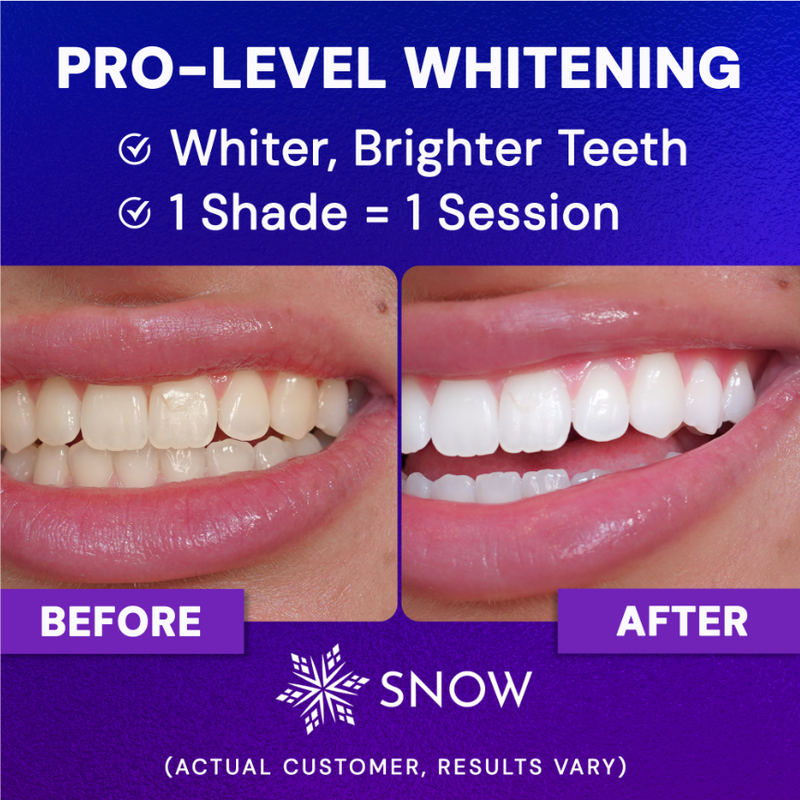You likely already know the most popular orthodontic treatments, including traditional metal braces and more modern options like Invisalign. However, you may be surprised to learn that 5% of Americans have major dentofacial deformities that aren't treatable with orthodontia alone.
Severe malocclusion or misalignment of the jaw is a relatively common issue affecting millions nationwide. When your teeth and jaws aren't aligned, like with an overbite or underbite, jaw surgery may be required to move them back into place.
Jaw surgery, also known as orthognathic surgery, can improve the structure and appearance of the face, correct functional problems, and even help with vocal and oral health. Orthognathic surgery can be life-changing. However, many patients are unsure what to expect, especially regarding their procedure's cost and surgical details.
If you require jaw surgery and are hoping to learn about the price and types of orthognathic procedures, keep reading to find out more.
WHAT IS ORTHOGNATHIC SURGERY?
Orthognathic surgery is a type of oral and maxillofacial surgery used to correct irregularities of the jaws, treat an airway obstruction, or fix an abnormality causing the teeth to fit together improperly (malocclusion). Jaw surgery itself includes a spectrum of surgical procedures performed on the upper jaw, lower jaw, both jaws, or the chin, to improve both function and overall appearance. The procedures are performed in cases where orthodontic treatment alone can't correct a jaw-related issue.
Most importantly, orthognathic surgery is not a single event. Rather, it is a process involving both an orthodontist and an oral and maxillofacial surgeon (OMS). First, orthodontia is required to prep the teeth for surgery. Next comes the actual jaw surgery, followed by a recovery period and more orthodontic treatment to complete the transformation. Altogether, the process typically takes between two and three years.
WHAT CONDITIONS ARE TREATED WITH ORTHOGNATHIC SURGERY?
Orthognathic surgery can treat a wide variety of conditions. Most often, it's used to correct a misaligned jaw. Typically, jawbone issues are present at birth (congenital) or caused later on due to a serious injury or medical condition affecting the jaw.
These problems may lead to crooked teeth or an "off bite," such as an underbite, overbite, or open bite. Oral and maxillofacial surgeons can perform jaw surgery to improve how the teeth fit together and normalize facial proportions to create a more harmonious appearance.
WHAT ARE SOME EXAMPLES OF CONGENITAL JAW PROBLEMS?
As we discussed, congenital jaw problems are present at birth. Some examples of congenital jaw conditions treated with orthognathic surgery include:
- Bite issues (overbite, underbite, crossbite, or open bite)
- Cleft lip and palate
- Pierre Robin sequence
- Apert syndrome
- Crouzon syndrome
- Pfeiffer syndrome
- Treacher Collins syndrome
WHAT ARE SOME EXAMPLES OF JAW PROBLEMS CAUSED BY INJURIES OR MEDICAL CONDITIONS?
Jaw problems caused by injuries or medical conditions developed after birth are the most common reasons for orthognathic surgery. Examples may include:
- Temporal mandibular disorders (TMJ)
- Growth disturbances due to excess growth hormone
- Facial fractures
- Cysts and tumors
- Obstructive sleep apnea (OSA)
IDEAL CANDIDATES FOR ORTHOGNATHIC SURGERY
Suppose you're suffering from jaw pain or a jaw-related deformity. In that case, it's best to visit an oral surgeon and undergo a comprehensive examination to determine whether you're a candidate for orthognathic or reconstructive surgery. Generally, ideal jaw surgery candidates are patients with fully grown jawbones and jaw-related issues that can't be fixed with orthodontics alone.
The jawbones typically stop growing sometime between ages 14 and 21. Consequently, the optimal age for jaw surgery is in the late teens or early 20s. It's also essential that orthognathic surgery patients be in good overall health and free from any other medical conditions that could make surgery more difficult.
BENEFITS OF ORTHOGNATHIC SURGERY
During jaw surgery, the teeth and jaws are moved into a more favorable and healthy position. This process can help with everyday tasks, like talking, eating, chewing, and even breathing. However, in addition to improving functional concerns, orthognathic surgery can also enhance a person's appearance.
Although every patient's experience will differ, correcting serious jaw issues often results in a more harmonious facial balance and more natural-looking features. More benefits of orthognathic surgery may include:
- Improved overall jaw function
- Relief from temporomandibular joint (TMJ) pain
- Improvement in speech impediments
- Improved teeth function
- Relief from chronic mouth breathing
- Correction of facial injuries or deformities
- Improved facial symmetry
- Treatment of obstructive sleep apnea (OSA)
- Improved sleep
RISKS OF UNTREATED JAW MISALIGNMENT
If a dentist or oral surgeon recommends that you undergo orthognathic surgery, it's essential to follow their guidance and schedule treatment. Jaw-related issues and bite problems can cause patients' risk of other dental concerns to increase if left untreated. Additionally, untreated jaw misalignments often cause patients to grind their teeth (bruxism) and suffer from frequent jaw pain.
Candidates for orthognathic surgery may also find it more challenging to keep their teeth clean, increasing their chances of developing gum disease (periodontitis) or tooth decay. An untreated jaw misalignment may also cause dry mouth, bad breath, severe headaches, or speaking difficulties, such as a lisp or slurred speech.
WHAT HAPPENS BEFORE ORTHOGNATHIC SURGERY?
Orthognathic surgery requires extensive prep-work and collaboration with many specialists to be successful. Before your surgery, a team of doctors, including oral surgeons, orthodontists, and general dentists, will evaluate your condition and work together to develop a custom treatment plan and surgical strategy.
You'll likely have several appointments before jaw surgery, which typically involve taking x-rays, pictures, molds, and 3-D models of your teeth and jaws to help your surgeon plan the procedure. Then, thanks to today's modern technology, you can actually see the anticipated results of your treatment before you even undergo orthognathic surgery.
Once this preparation is complete, the first step of orthognathic surgery is typically orthodontic treatment. In most cases, an orthodontist will place braces on your teeth, which will stay on for about 12 to 18 months to align and prepare them for surgery. Occasionally, patients also require teeth reshaping or dental crowns to ensure their surgery will be effective.
MOST COMMON ORTHOGNATHIC PROCEDURES
You can have orthognathic surgery on the lower jaw, upper jaw, both jaws, or the chin. Which procedure you need depends on your specific jaw ailment.
For all orthognathic surgeries, the jawbones are either shortened or lengthened and moved to give the jaws and teeth a more natural placement. Your individual face shape will ultimately dictate how your surgeon repositions your jawbones.
The most common orthognathic procedures are maxillary osteotomy, mandibular osteotomy, bimaxillary osteotomy, and genioplasty.
MAXILLARY OSTEOTOMY (UPPER JAW SURGERY)
A maxillary osteotomy, or upper jaw surgery, is performed to reposition the upper jaw (maxilla) in a more favorable position to improve functionality and facial harmony. This orthognathic surgery is done when the upper jaw sticks out too much or too little and can also treat an open bite or crossbite.
During the procedure, an oral surgeon makes incisions into the bone above the teeth so that the entire upper jaw, including the roof of the mouth and upper teeth, can move as one. Next, the jaw and upper teeth are moved forward, backward, or as needed until they are appropriately aligned with the lower teeth. Finally, the jaw is secured in its new position with metal plates, screws, wires, or rubber bands. The entire procedure takes about one to two hours to complete.
MANDIBULAR OSTEOTOMY (LOWER JAW SURGERY)
Medically, the lower jaw is called the mandible. It follows then that a mandibular osteotomy is an orthognathic procedure performed on the lower jaw. Typically, an oral surgeon will recommend a mandibular osteotomy to treat a lower jaw that protrudes or recedes significantly. It's also commonly used to correct an underbite. These jaw malformations are particularly detrimental to the harmony of the lower part of the face and can cause various medical issues, such as sleep apnea.
During the procedure, an oral surgeon will make incisions behind the molars and lengthwise down the jawbone so the jaw can move as one unit. Then, they'll move the lower jawbone backward or forward, depending on the patient's bite alignment and specific bite issues. Finally, the mandible will be fixed in its new position with metal plates or screws to hold it together as it heals. Like upper jaw surgery, lower jaw surgery also takes between one and two hours to complete.
BIMAXILLARY OSTEOTOMY (DOUBLE JAW SURGERY)
Most orthognathic surgery patients need to reposition both the mandible and the maxilla to achieve facial harmony and proper jaw alignment. This procedure is called a bimaxillary osteotomy or double jaw surgery.
Typically, bimaxillary orthognathic surgery is performed on patients with more significant facial asymmetry or severe abnormalities that affect both jaws. An oral surgeon's techniques for this surgery include a combination of those we already discussed for the maxillary and mandibular osteotomy procedures. However, because operating on both jaws is often more complex and challenging, the surgery typically takes between three and four hours to complete.
GENIOPLASTY (CHIN SURGERY)
Unlike the other orthognathic surgeries, a genioplasty is performed on the chin. This procedure is done to correct a small or receding chin, which often accompanies a severely receded lower jaw. Consequently, a genioplasty is typically coupled with a mandibular osteotomy for optimal results.
Oral surgeons frequently alter the jaw and restructure the chin during the same genioplasty surgery. First, they separate the chin from the rest of the lower jaw and modify it by moving the chin forward, lengthening it, or shortening it without moving the teeth. Next, the surgeon will cut a piece of the chin bone, move it forward, and secure it into its new position with metal plates and screws. The entire procedure may take anywhere from 30 minutes to three hours.
WHAT HAPPENS AFTER ORTHOGNATHIC SURGERY?
Orthognathic surgery is not an outpatient procedure. Instead, it typically requires general anesthesia, up to a few nights' stay in a hospital or surgical facility, and several months to fully heal. That said, patients who are only undergoing a genioplasty can often return home the same day as their procedure.
A patient's recovery after orthognathic surgery varies depending on their age, overall health, and the type of surgical procedure performed. However, most patients should expect to take at least a few days off work or school to rest after their operation. Most importantly, following your surgeon's post-operative instructions is essential to ensure optimal results. These usually include:
- What you should and should not eat
- How to practice good oral hygiene
- Avoiding tobacco and alcohol
- Medications to manage pain
- When to return to normal activities
After initial jaw healing, your orthodontist will pick up where your oral surgeon left off by using braces to finish aligning your teeth. This final stage of orthognathic treatment typically takes about six months to complete. However, it may take longer depending on the details of your case. Once your braces are removed, you'll be fitted with retainers to hold your teeth in their new position.
HOW MUCH DOES ORTHOGNATHIC SURGERY COST?
The cost of orthognathic surgery can range from $20,000 to $50,000, depending on various factors. This price typically includes an initial consultation, x-rays, 3-D imaging, surgery itself, and any follow-up care after treatment. Remember though, that any required orthodontia generally is not included in the total cost of treatment.
Since corrective jaw surgery is typically considered a medical operation rather than a cosmetic or elective surgery, it is often covered at least in part by most health insurance companies. Still, it's recommended that you call your provider before beginning treatment to find out exactly what's covered and what isn't.
WHAT IMPACTS THE COST OF ORTHOGNATHIC SURGERY?
The total cost of your orthognathic surgery will depend on several factors, including the surgeon and hospital you choose, your geographic location, and the complexity of your procedure.
As you may expect, particularly severe cases requiring double jaw surgery cost far more to correct than more straightforward or single jaw misalignments. Furthermore, surgeons with more experience and higher credentials are more likely to charge more for their services.
That said, correcting an orthognathic surgery gone wrong can be extremely costly and technically challenging. So, it's more effective in the long run to choose the most experienced oral surgeon and orthodontist for the job – even if their fees are higher than doctors with less of a track record.
Frequently Asked Questions
Is orthognathic surgery painful?
It is normal to feel some discomfort or pressure in or around your jaw joint locations following jaw surgery. This might feel like an earache. It is caused by pressure in the jaw joint area due to your jaw's altered location. This normally goes away in 2 to 3 weeks.
Is it worth getting orthognathic surgery?
This surgery may be necessary if you have an open bite in which the upper and lower jaws do not fit together even when the mouth is closed. On the other hand, someone with an underbite or a depressed lower jaw may also require surgery.
Can you talk after orthognathic surgery?
You may have some joint sounds on the right and left sides. Your joints must adjust to their new position. It may be difficult to communicate or to be understood following surgery. This will get better with time.
What is the success rate for orthognathic surgery?
According to the Journal of the Korean Association of Oral and Maxillofacial Surgeons, in 62% of cases, patients underwent surgery for cosmetic reasons, 18% for functional benefit, and 18% for both. Patient satisfaction improved from 81% after six months of surgery to 92% after more than six months.
FINAL TAKEAWAY
Orthognathic surgery is performed to readjust or correct a jaw misalignment or bite issue. These procedures may involve the upper jaw, lower jaw, both jaws, or even the chin. Typically, candidates for orthognathic surgery are patients suffering from poor oral function or facial asymmetry resulting from congenital disorders, facial injuries, or other jaw-related issues.
Before treatment, an oral surgeon and orthodontist will work together to decide which procedures are most appropriate for the patient's specific condition. Next, patients are fitted with braces for several months to prepare their teeth for surgery. Then, the actual jaw surgery is performed to move the jawbone into a more natural position. Finally, after several weeks of recovery, additional orthodontia is required to move the teeth into their final position. The entire process may take several years to complete.
The average cost of orthognathic surgery is between $20,000 and $50,000. However, the total cost of your treatment, including orthodontics, will depend on various factors unique to you. Be sure to contact your insurance provider before scheduling your procedure to confirm what your insurance covers and obtain a more accurate estimate for the total cost of your treatment.










































































